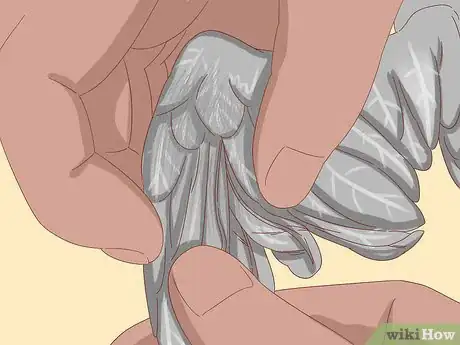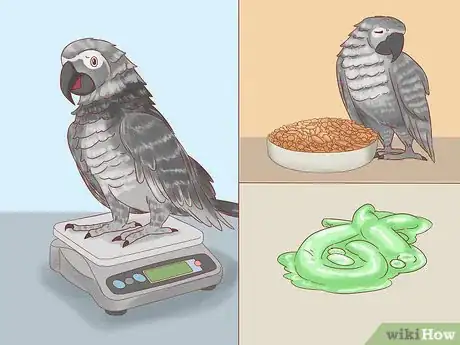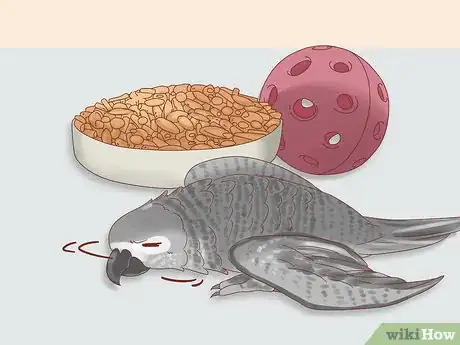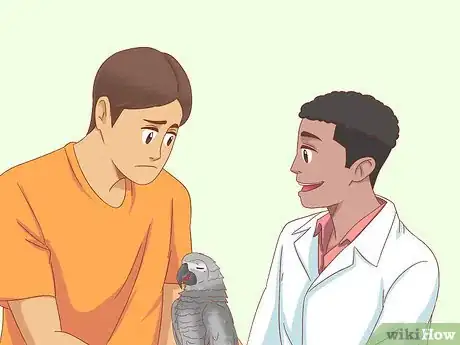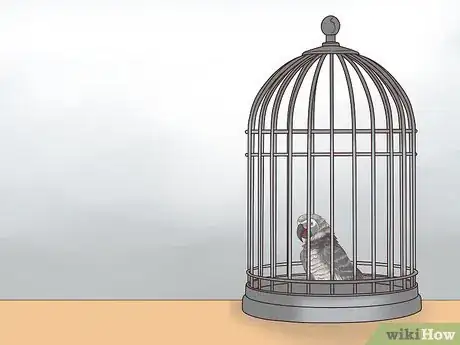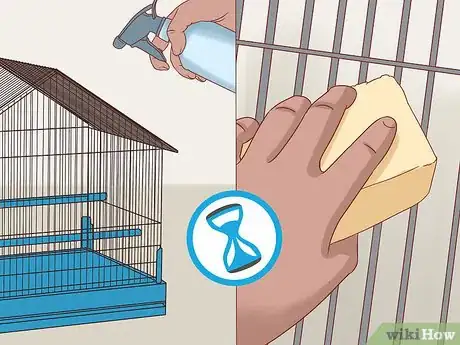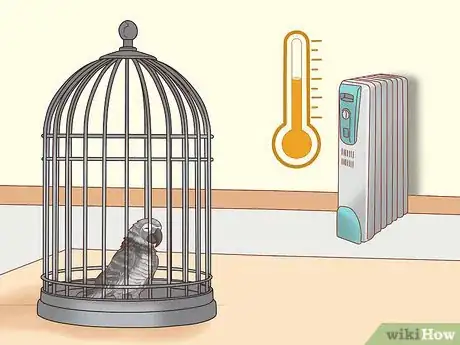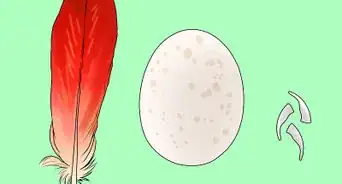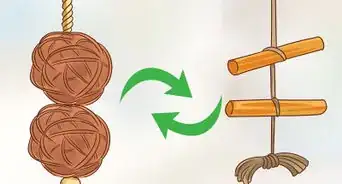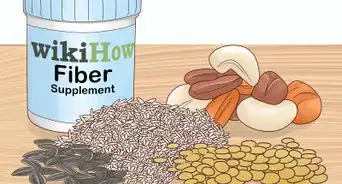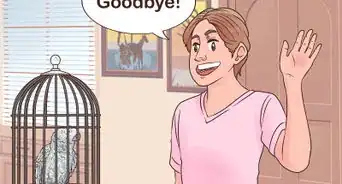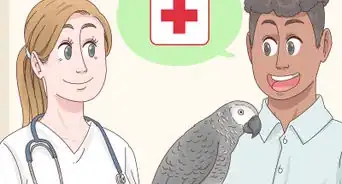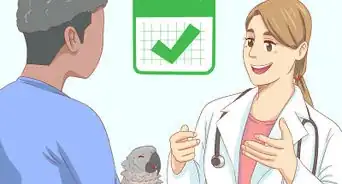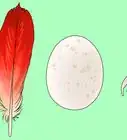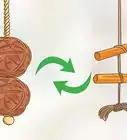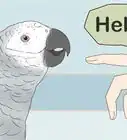This article was co-authored by Pippa Elliott, MRCVS. Dr. Elliott, BVMS, MRCVS is a veterinarian with over 30 years of experience in veterinary surgery and companion animal practice. She graduated from the University of Glasgow in 1987 with a degree in veterinary medicine and surgery. She has worked at the same animal clinic in her hometown for over 20 years.
This article has been viewed 15,984 times.
Taking care of an African grey parrot with Psittacine Beak and Feather Disease (PBFD) can be challenging for loving pet owners. The disease is fatal, but it is possible to manage your bird’s discomfort and keep it comfortable. Identify the disease by observing your parrot for signs and visiting your veterinarian. If your parrot is diagnosed with PBFD, quarantine it from other birds, treat any secondary infections it has, and maintain a consistent, nurturing routine.
Steps
Identifying the Symptoms
-
1Check your parrot's feathers. Keep an eye on your parrot's feathers for signs of PBFD. The virus kills developing feathers, causing them to grow in abnormally and fall out. Look for feathers that are unusually short, clubbed, or sharp-looking.
- Extensive loss of feathers may result in bald spots and exposed skin.
- Feather loss and damage can also be a sign of behavioural problems.[1]
-
2Monitor your parrot for digestive issues. Loss of appetite and weight loss are symptoms of PBFD in birds, so keep track of your parrot's eating habits. Look at your bird's food bowl every day when you change it, and check to see how much food has spilled out onto the bottom of the cage. Look for signs of regurgitation and diarrhea when you change the cage liner each day, which are also signs of the PBFD.[2]
- Look for green coloring in your bird's droppings, which is another possible sign of PBFD.
- Digestive issues can also be a sign of bacterial infections, nutritional deficiencies, or other terminal illnesses (e.g., Avian Ganglioneuritis).[3]
Advertisement -
3Look at your bird's beak. Beak abnormalities are a physical sign of PBFD in birds. Beaks of infected birds may develop sunken-in areas, crack, or fracture. Beaks may also become elongated from overgrowth due to the virus.
- Abnormal beak development is also a possible symptom of a vitamin D deficiency.[4]
-
4Watch for depression and listlessness. A bird infected with PBFD may shows signs of being depressed or listless. Observe your parrot for a lack of energy and overall activity. Your playful and curious parrot may demonstrate less interest in its toys, food, or other sources of enjoyment.
- A lack of energy and movement may also be attributed to anemia, a condition that is often observable in African grey parrots with PBFD.
Dealing With an Infected Bird
-
1Visit your veterinarian. Confirm that your African grey parrot has PBFD by visiting your veterinarian. The vet can run a blood test to determine whether your bird is suffering from the illness. There is no known cure for PBFD, but your veterinarian can help treat the secondary infections associated with it.[5]
-
2Quarantine the bird. If you have multiple birds, quarantine your infected bird right away in a cage by itself, preferably in a separate room. Remove your other birds from their shared cage and disinfect it thoroughly as well as everything in it. At the first opportunity, bring your other birds to the vet to be tested for PBFD.[6]
-
3Disinfect the cage. Apply a disinfectant to all surfaces of the bird cage as well as everything inside of it, and leave it on for five to ten minutes. Rinse off the cage with a hose, removable shower head, or a wet sponge. Leave it to air dry for several hours.
- Regular disinfectants can be extremely toxic to birds. Purchase a bird-friendly disinfectant at a pet store, or online.
- Opt to dispose of objects that are porous and difficult to disinfect (e.g., wooden perches) and replace them with new ones.
-
4Treat secondary infections. PBFD will hinder a bird's immune system, making it more vulnerable to infection and illness. Such infections may be viral, fungal, bacterial or parasitic. If you suspect that your parrot is experiencing an infection, bring it to the vet for treatment advice or a prescription.[7]
- Symptoms of secondary infections depend on where and how they manifest. For instance, your parrot may contract a fungal infection such as Aspergillosis, which commonly occurs in the respiratory tract and causes voice change.[8]
- Your vet may prescribe vitamins, supplements, or probiotics to boost your parrot's immune system.[9]
- Most birds that succumb to PBFD die due to secondary infections that overwhelm their immune system. Seek prompt treatment for any complications you suspect.
-
5Keep your parrot comfortable. African grey parrots are sensitive birds who like routine and social contact. Keep your infected pet comfortable by changing its everyday schedule as little as possible and giving it ample attention. Adjust the temperature in the room where your parrot’s cage is kept to keep the bird warm despite feather loss.[10]
Warnings
- Always take your bird to the vet if it shows symptoms that may be due to PBFD to diagnosing their underlying.⧼thumbs_response⧽
References
- ↑ https://www.beautyofbirds.com/africangreydiseases.html
- ↑ http://www.peteducation.com/article.cfm?c=15+1829&aid=2592
- ↑ https://www.beautyofbirds.com/africangreydiseases.html
- ↑ https://www.beautyofbirds.com/africangreydiseases.html
- ↑ http://www.peteducation.com/article.cfm?c=15+1829&aid=2592
- ↑ http://www.peteducation.com/article.cfm?c=15+1829&aid=2592
- ↑ http://www.peteducation.com/article.cfm?c=15+1829&aid=2592
- ↑ http://www.merckvetmanual.com/exotic-and-laboratory-animals/pet-birds/mycotic-diseases-of-pet-birds
- ↑ https://www.beautyofbirds.com/PBFD.html
About This Article
If you've noticed symptoms of psittacine beak and feather disease in your African grey parrot, like feather loss, digestive issues, beak abnormalities, or listlessness, it's important that you take it to see a vet. Your vet will run blood tests to figure out what's going on with your parrot, and they can recommend the best treatment plan. Unfortunately, psittacine beak and feather disease can't be cured, but your vet can prescribe medication and recommend supplements to help manage secondary infections. In addition to working with your vet, there are things you can do for your parrot at home, like disinfecting its cage and keeping it quarantined away from other birds. Additionally, keep your parrot in a warm room so it doesn't get chilled because of its feather loss. For advice from our Veterinary co-author, like how to inspect your parrot's feathers for signs of the disease, keep reading.
